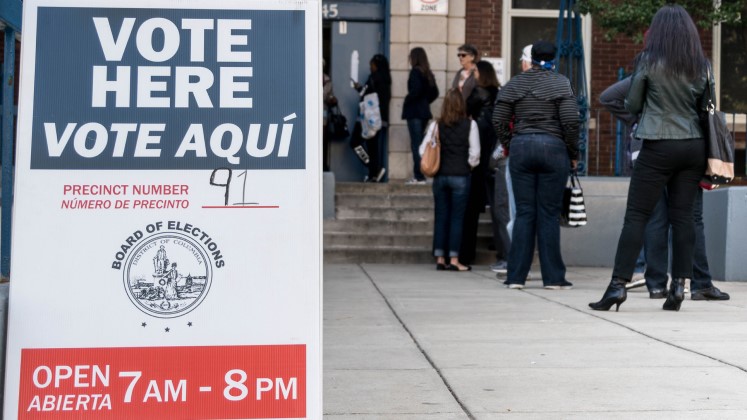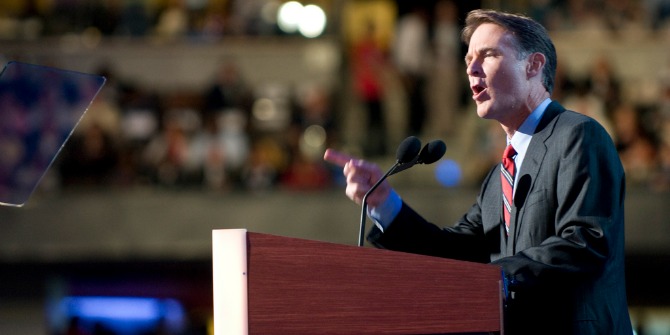 Last weekend, President Joe Biden and Republican House Speaker Kevin McCarthy agreed to a deal “in principle” to raise the US debt ceiling and avert a federal default. Among other items, the deal would largely flatten non-defense discretionary spending in 2024 and 2025, claw back billions of dollars in unused COVID-19 relief funds, and strengthen work requirements for certain social programs. In this Q&A, Thomas Gift discusses what’s next for the deal, why it’s an adequate (but far from optimal) solution, and what it means for future debates over America’s debt challenges.
Last weekend, President Joe Biden and Republican House Speaker Kevin McCarthy agreed to a deal “in principle” to raise the US debt ceiling and avert a federal default. Among other items, the deal would largely flatten non-defense discretionary spending in 2024 and 2025, claw back billions of dollars in unused COVID-19 relief funds, and strengthen work requirements for certain social programs. In this Q&A, Thomas Gift discusses what’s next for the deal, why it’s an adequate (but far from optimal) solution, and what it means for future debates over America’s debt challenges.
How is news of the debt ceiling deal being received on Capitol Hill?
Agreeing to a deal in principle versus inking the legislation are obviously two different tasks. We’ll soon find out if Joe Biden and Republican House Speaker Kevin McCarthy’s negotiating mandates for their respective parties are as wide as they hope. In the House, there’s been a great deal of chatter about how much the hardline GOP Freedom Caucus will compromise on spending caps. Congressman Chip Roy of Texas, for example, has been explicit that he won’t support the bill without much more belt-tightening. Reportedly, some far-right legislators are also looking at procedural steps to obstruct the bill or to claw back concessions that McCarthy has allegedly made. We also shouldn’t underestimate how much this deal will irk progressives, who talked a lot about “non-negotiables” in entitlements that ended up being negotiated. This could spark a backlash, not just among House Democrats, but also in the Senate.
Will this deal end up being passed?
Like any compromise, no side is going to be happy with the final product. It’s a mishmash of priorities that has all the makings of Washington “sausage-making.” Still, the reason we can expect this bill to cross the finish line (apart from the fact that most agree that failing to lift the debt ceiling would be calamitous) is because it’s a big, opaque item of legislation. Precisely because it’s so complex, it gives both sides room to sell the proposal as a win. Democrats can say they safeguarded the most significant social programs. That includes avoiding any major overhauls to Medicaid. Republicans can say they achieved a reasonable, if not huge, amount of deficit reduction. That includes making headway in enacting new work requirement for food stamps. Fundamentally, this is a moderate bill. We often hear there’s no middle in Washington anymore, but if this deal gets enacted, it will be because of the political center.
What’s suboptimal about the deal?
The debt ceiling hasn’t solved structural indebtedness. Washington is operating on short-term election cycles. Policymaking is myopic. This deal is a needed band-aid, but one that doesn’t tackle the root cause of fiscal largesse. Political incentives make this entirely predictable: House members turn over their seats every two years, so there’s little incentive to take a long-run perspective. For all the talk of polarization, and all the posturing over the debt ceiling, that produces an underlying consensus: that the federal government should spend more than it takes in. The biggest divisions are fought over what money will be spent on, and the rate of increase in the debt. But, in the end, ballooning expenditures mean one of two outcomes: either a) deferred taxation onto the next generation, or b) enormous costs on servicing the debt, which will eventually force the government to cut large entitlements due to crowding out.

Photo by Alice Pasqual on Unsplash
Does having a federal debt ceiling still serve a legitimate purpose?
When the debt ceiling in the US originated in 1917, it was set so high that it was almost implausible that the federal government would reach it. In recent years, it’s been used to curb on spending on the margins. But it’s hard to argue that it makes sense now. All it seems to do is sow political turmoil and erode America’s reputation. After all, nothing’s being remedied. Soon, it’s going to be January 2025, the debt ceiling will rear its head again, and we’ll be looking to avoid another crisis. Everyone should be relieved if Washington manages to stave off a default. But American government has enough drama as it is without injecting even more precarity into the system. If there’s no political will for fiscal restraint, then there’s no political will for it. But a recurrent debt ceiling showdown just makes the balance sheet look a little less uneven. No one can look at this bill and say candidly that it’s responsible budgeting.
How will this all affect trust in Washington?
About 80 percent of Americans already disapprove of Congress, so it’s unclear how much further that number can drop. At the same time, there’s another way of looking at the whole debt ceiling saga, which is: It’s often said that a crisis is a terrible thing to waste. But for some lawmakers on Capitol Hill, it might even be a better thing to manufacture. A nontrivial fraction of both parties seemed to revel in this fight. They’re the ones who inhabit gerrymandered districts, and who play to the fringes of their bases where ideological purity is prized. Many Republicans have jumped at the chance to smear Democrats as profligate spenders with no sense of fiscal restraint. For them, threatening default is nothing if they can score political points. Many Democrats, too, have seen the debt ceiling as an opportunity to depict Republicans as reckless, blow-up-the system extremists. That’s also a message they can exploit for their electoral advantage.
- These remarks are based in part on interviews by Thomas Gift for CNN “Newsroom” on May 28 and Bloomberg “Surveillance” on May 30, 2023.
- Please read our comments policy before commenting.
- Note: This article gives the views of the author, and not the position of USAPP – American Politics and Policy, nor the London School of Economics.
- Shortened URL for this post: https://bit.ly/3WFvYUi






